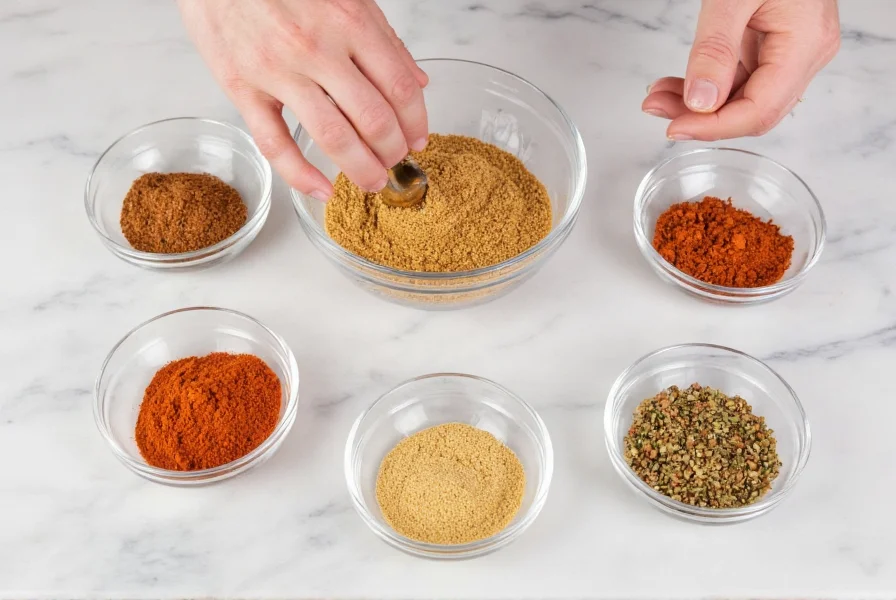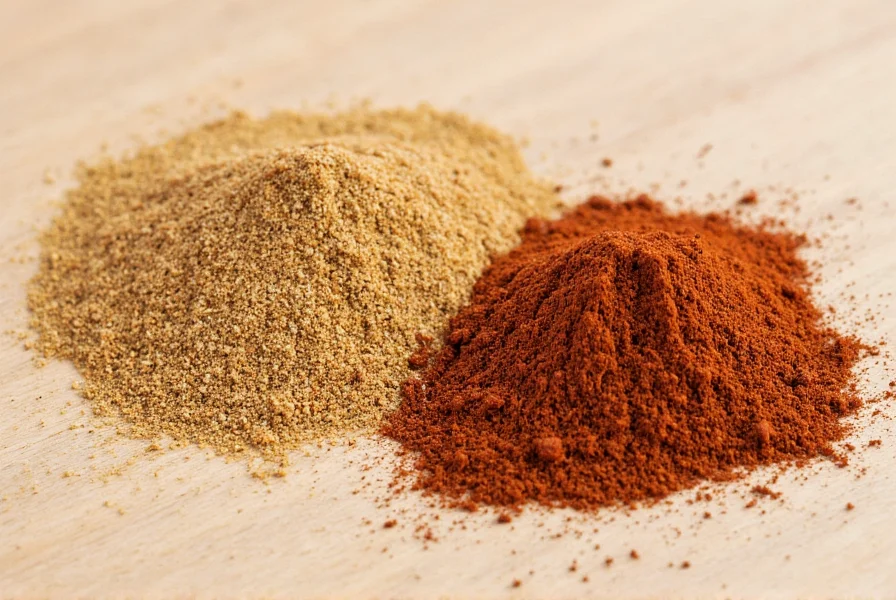Running out of cumin mid-recipe can derail your cooking plans, but several pantry staples make excellent replacements. Understanding which cumin alternative works best depends on your dish's cuisine, required flavor intensity, and what spices you already have available. This guide provides chef-tested substitutions with precise measurements to maintain your recipe's integrity.
Why You Need Cumin Substitutes
Cumin's distinctive earthy, warm, and slightly citrusy flavor features prominently in Mexican, Indian, Middle Eastern, and North African cuisines. When you lack this essential spice, your chili might lack depth, your curry could miss complexity, or your tacos may taste incomplete. Common reasons for seeking cumin alternatives include pantry shortages, dietary restrictions, or simply wanting to experiment with different flavor profiles while maintaining similar culinary results.
Top 7 Cumin Substitutes Ranked by Effectiveness
| Substitute | Ratio to Replace Cumin | Best For | Flavor Notes |
|---|---|---|---|
| Ground Coriander | 1.5:1 (1½ tsp coriander per 1 tsp cumin) | Indian, Middle Eastern dishes | Milder, citrusy, less earthy |
| Chili Powder | 1:1 | Mexican, Tex-Mex recipes | Contains cumin plus garlic, oregano |
| Garam Masala | 1:1 | Indian curries, stews | Warmer, more complex spice blend |
| Taco Seasoning | 1:1 | Tacos, burritos, fajitas | Contains cumin plus complementary spices |
| Caraway Seeds | 1:1 (use ground) | Mediterranean, German dishes | Similar earthiness with distinct anise notes |
| Paprika | 1:1 (smoked for depth) | Spanish, Hungarian recipes | Sweeter, less earthy, adds color |
| Cumin-Coriander Blend | 1:1 homemade mix | Most applications | Closest approximation (2 parts coriander, 1 part cumin) |
Detailed Substitute Analysis
Ground Coriander: The Most Accessible Alternative
When considering what can I use instead of cumin, ground coriander stands out as the most versatile pantry staple. While milder than cumin, it shares similar citrus notes. Use 50% more coriander than the cumin amount called for. This substitution works particularly well in Indian recipes like dal or vegetable curries where the flavor profile remains compatible. For those seeking a cumin replacement in Indian cooking, this ratio adjustment maintains the dish's essential character without overwhelming other spices.
Chili Powder: Best for Mexican Dishes
Chili powder typically contains cumin along with garlic powder, oregano, and paprika, making it an excellent 1:1 substitute specifically for Mexican recipes. When determining the best cumin substitute for chili, this blend preserves the authentic flavor profile while adding complementary notes. Check your chili powder ingredients first—some blends contain minimal cumin, requiring slight adjustments.

Garam Masala: Complex Indian Alternative
For Indian cuisine specifically, garam masala provides a sophisticated alternative when you need a cumin substitute. This blend of cardamom, cinnamon, cloves, and nutmeg offers warmth similar to cumin but with greater complexity. Use equal parts garam masala to replace cumin in curries and rice dishes. This works exceptionally well as a cumin alternative for Indian recipes where the additional spices enhance rather than detract from the intended flavor profile.
Taco Seasoning: The Quick Fix for Tex-Mex
When making tacos or fajitas and wondering how to substitute cumin in recipes, taco seasoning offers immediate relief. Most commercial blends contain cumin as a primary ingredient along with complementary spices. Use a 1:1 ratio for seamless integration into Mexican dishes. For homemade taco seasoning as cumin replacement, combine 2 tsp paprika, 1 tsp garlic powder, ½ tsp oregano, and ½ tsp black pepper per teaspoon of cumin needed.
Cuisine-Specific Substitution Guide
Understanding which substitute works best requires considering your dish's cultural origins:
- Mexican recipes: Chili powder or taco seasoning maintain authentic flavor profiles
- Indian dishes: Garam masala or coriander provide compatible flavor notes
- Middle Eastern cuisine: Caraway seeds offer similar earthiness with distinctive character
- Mediterranean cooking: Paprika (especially smoked) adds depth without overpowering
What NOT to Substitute for Cumin
Avoid using curry powder as a direct cumin substitute—it contains turmeric which will dramatically change your dish's color and flavor profile. Similarly, don't substitute cumin with plain paprika in non-Spanish dishes as it lacks the necessary earthiness. For those seeking a cumin alternative for Mexican food, avoid using Italian seasoning which introduces incompatible herb flavors.
Creating Your Own Cumin Substitute Blend
When you need a reliable homemade cumin substitute, combine:
- 2 parts ground coriander
- 1 part chili powder
- ½ part turmeric (for color)
- ¼ part garlic powder
Mix thoroughly and store in an airtight container. Use equal parts of this blend to replace cumin in most recipes. This combination delivers the earthiness of cumin while maintaining balance across multiple cuisines. For a stronger approximation of cumin's distinctive flavor, add a pinch of cayenne to enhance the warmth.

Practical Substitution Tips
Add substitutes gradually and taste as you cook—most alternatives require slight adjustments to achieve optimal flavor balance. For dishes requiring long cooking times like stews or curries, add substitutes early to allow flavors to meld. In quick-cooking applications like taco meat, add substitutes near the end to preserve volatile flavor compounds. Remember that dried spices intensify over time, so adjust quantities if preparing make-ahead meals.











 浙公网安备
33010002000092号
浙公网安备
33010002000092号 浙B2-20120091-4
浙B2-20120091-4